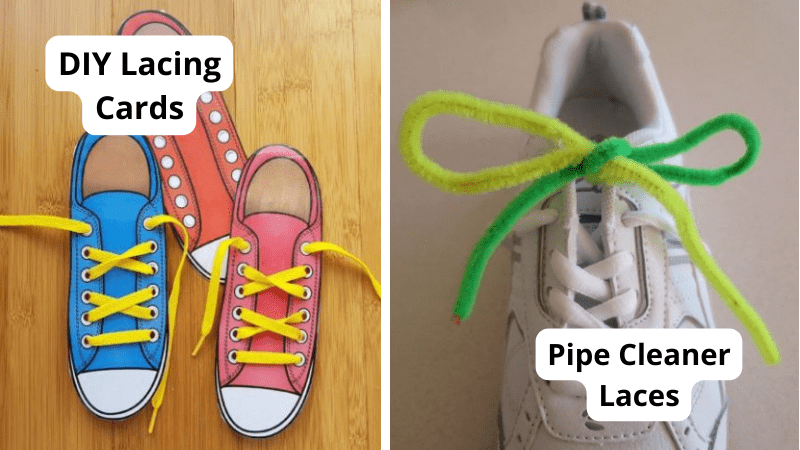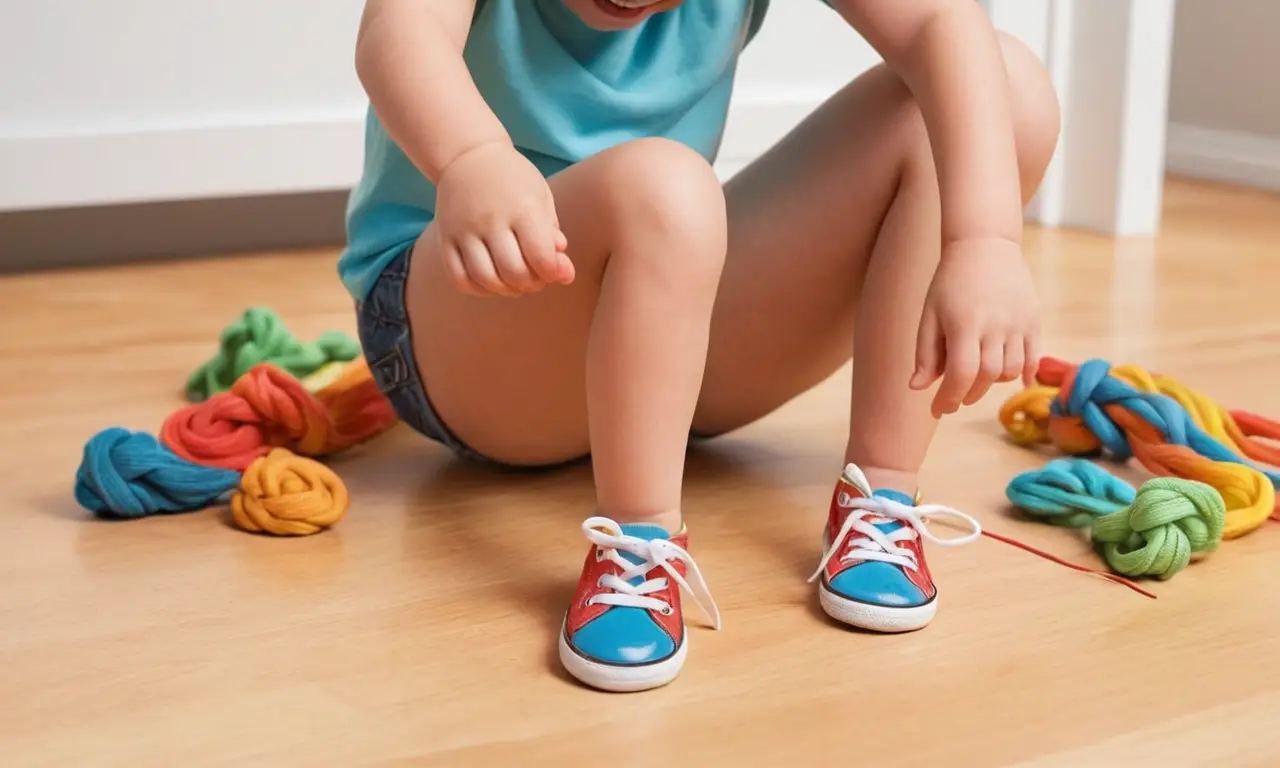
Learning to tie shoelaces is a significant milestone for children, marking their growing independence and ability to perform everyday tasks. This seemingly simple skill requires a combination of fine motor skills, hand-eye coordination, and problem-solving abilities. While some children may show interest in laces as early as 3 years old, most develop the necessary dexterity around age 5.
This article will guide parents through the developmental milestones associated with shoelace tying, explore the essential fine motor skills involved, and provide effective teaching methods and practice tips to help your child master this valuable skill.
Developmental Milestones for Shoelace Tying
Children typically begin showing interest in laces between 3 and 4 years old. They might try to manipulate them or mimic adults tying their shoes. However, the actual ability to tie shoelaces usually emerges between ages 4 and 7. This developmental range can vary depending on individual factors such as hand size, dexterity, and cognitive development.
Around age 5, children typically possess the necessary fine motor skills to begin learning how to tie shoelaces. They have developed greater control over their finger movements and can manipulate small objects with more precision. This stage also coincides with increased problem-solving abilities, allowing children to understand the sequence of steps involved in tying a knot.
By age 6 or 7, most children have mastered the art of tying shoelaces independently. They can execute the various steps smoothly and efficiently, adapting their technique as needed for different types of shoes.
Fine Motor Skills and Shoelaces

Tying shoelaces requires a complex interplay of fine motor skills. These are the intricate movements controlled by small muscles in the hands and fingers. Some key fine motor skills essential for shoelace tying include:
- Pincer grasp: This involves using the thumb and index finger to pick up and manipulate small objects, such as shoelaces.
- Finger opposition: The ability to bring the thumb and fingertips together to create a tight grip on the laces.
- Hand-eye coordination: Accurately coordinating hand movements with visual input to guide the laces through the knots.
Developing these fine motor skills takes time and practice. Engaging in activities that promote dexterity, such as playing with building blocks, puzzles, or threading beads, can help children strengthen their hands and prepare them for the challenge of tying shoelaces.
Teaching Methods for Shoelace Tying
There are various effective methods for teaching children to tie shoelaces.
- The Bunny Ears Method: This popular method involves creating two “bunny ears” with the laces and then crossing and looping them together. It’s a visual and engaging approach that many children find easy to understand.
The Magic Fingers Method: This technique uses specific finger movements to guide the laces through the knots. It emphasizes precise hand coordination and can be helpful for children who struggle with visualizing the steps.
Practice Laces: Using practice laces or a shoelace tying board can provide a tactile and less frustrating learning experience. These tools allow children to focus on the mechanics of tying without the pressure of dealing with real shoes.
Practice Tips for Kids

Making shoelace tying practice fun and engaging is crucial for success. Here are some tips:
- Start Small: Begin by practicing with one lace at a time, gradually introducing both laces as your child gains confidence.
- Break it Down: Divide the process into smaller steps and focus on mastering each step before moving on to the next. Celebrate small victories along the way.
Make it a Game: Turn practice sessions into games by setting timers, creating challenges, or using rewards for successful attempts.
Be Patient and Encouraging: Learning to tie shoelaces can be frustrating at times. Offer plenty of encouragement, patience, and positive reinforcement throughout the process.
Conclusion
Learning to tie shoelaces is a significant developmental milestone that empowers children with independence and self-reliance. By understanding the developmental stages involved, focusing on fine motor skill development, and employing effective teaching methods and practice tips, parents can guide their children through this learning journey successfully. Remember to be patient, encouraging, and celebrate each step of progress along the way.
